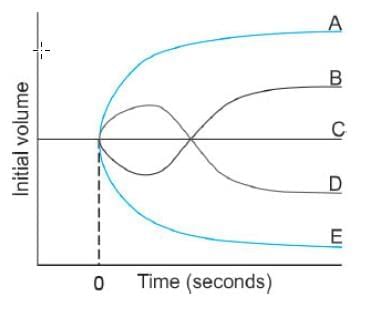Test: Homeostasis of Body Fluids- 2 - NEET PG MCQ
20 Questions MCQ Test - Test: Homeostasis of Body Fluids- 2
The following are true about body water: [PGI Dec 07]
Which of the following methods is not used for measurement of body fluid volumes?
True statements about ions composition in body: [PGI June 06]
Baroreceptor reflex is which type of feedback system? (May 18)
Feed forward control system is employed during the regulation of: (Nov 17)
Normal plasma volume in an adult is: [May 18]
The diagram below illustrates possible changes in RBC volume resulting from a change in ECF composition for a cell equilibrated in 150 mM/L NaCl solution at time 0.

Which curve best illustrates the volume caused by immersion of the cell into an aqueous solution of 300 mOsm CaCl₂?
The diagram below illustrates possible changes in RBC volume resulting from a change in ECF composition for a cell equilibrated in 150 mM/L NaCl solution at time 0.

Which curve best illustrates the volume change caused by immersion of the cell into a mixture of aqueous solution of 200 mOsm/L NaCl and 200 mOsm/L of glycerol?














